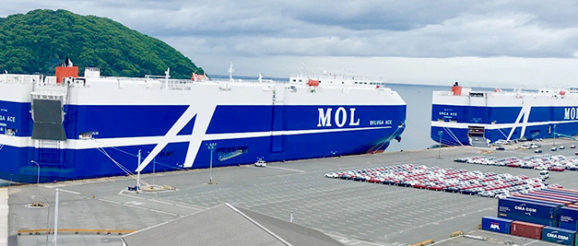MOL Utilizes AI in Latest RoRo Innovation – Port Technology International

Japanese carrier Mitsui O.S.K. Lines (MOL) has initiated a project with Osaka University to develop a vessel allocation plan and cargo loading plan for car carriers based on “mathematical optimization,” one of the fundamental technologies of artificial intelligence (AI).
This development could allow MOL personnel to complete vessel allocation and loading plans more quickly than ever before.
MOL operates approximately 100 car carriers or Roll On-Roll Off (RoRo) vessels with an average of 5,000 standard passenger cars.
In recent years, transport and logistics patterns of automakers and other shippers have been diversifying, and efficient vessel allocation and cargo loading are absolutely essential to ensure the fleet to operate at peak effectiveness to meet customer needs.
Exclusive Paper: How Smart Technologies Increase Terminal Performance
For example, when the vessel is calling several loading and unloading ports, the deck and hold in which cargo is loaded can significantly affect safety of cargo operation and its efficiency.
The research team will assess the potential for practical use of the technology, aimed at improving services through digitalization, and significantly shortening the required time to respond to customers when transport volume or the order of port calls changes suddenly.
Cargo loading plan
Designing RoRo vessels requires very precise consideration of cargo weight, size and quantity.
Since the vehicles must be driven to and from their loading position, passageways must be clear at the appropriate time.
In addition, cargo loading positions (deck and hold) must be adjusted in consideration of hull stability during the voyage and loading/unloading safety.
So in many cases, plans must be redrawn in response to sudden changes in the number of units or changes in the order of calling ports.
Mathematical Optimization
Mathematical optimization is one of the representative mathematical methods for decision-making and problem-solving that selects an optimal solution from some set of available alternatives.
